
UTILITY, PARAMILITARY and FORESTRY
High Frequency Radios
This page is somewhat of a catch-all for photos of assorted radios in my collection which didn't fit anywhere else and were difficult to categorize. Some of these also appear on my friend Klaus-Peter's greenradios.de web pages, where you can also see other examples along the same lines. These are presented in no particular order. Most are post-WWII although some were made in wartime as the descriptions will note. Note that for all intents and purposes, affordable production of custom made crystals in the United States in small quantity has come to an end. Therefore other methods such as DDS VFO kits or the W9RAN Epson oscillator modules represent alternatives, although as a result the clarifier controls will no longer function .
MOTOROLA SA 200 (CAI CA-32)
This is an HF SSB radio actually made by CAI (Communications Associates, Inc.) in New York for Motorola about 1968-72. Fully solid state, it is capable of being used as a battery operated portable, a mobile or a temporary base station. It has two crystal controlled channels and, somewhat surprisingly, no receiver incremental tuning (RIT.) Examples can be found with either CAI or Motorola labels. It appears that Motorola eventually absorbed the CAI line in the early 1970's and all products after that date show only Motorola labeling. I was told by a former CAI employee that radios exiting the production might have had either Motorola or CAI labeling (see photo below.) It is interesting that Motorola had a habit of disavowing knowledge of the existence of these sets, which were probably designed for some application in Southeast Asia, based on the olive drab anodized color scheme. This one was used by the U.S. Bureau of Land Management (BLM,) and the other examples which have turned up have been from that source as well.
The SA200 could have an optional antenna tuner, which clipped across the front of the set, apparently in lieu of the battery charger / AC power supply which this example has. Originally, there would have been a battery box which clipped across the rear panel of the radio. It was missing on this example. It can be seen that the microphone is the same as that used on the Motorola PT200/300/400 series of pack set VHF FM radios. I have never seen an example of the antenna tuner accessory but "hope springs eternal."
Early models had different power connectors and featured a microphone gain control and a different metering switch arrangement. When using the battery power pack only, output power was reduced to just a couple of watts. This radio is more useful than others as it incorporates both USB and LSB, while many competitive radios from other makers offered just USB. In the "what were they thinking?" category, this radio uses an oven assembly to maintain crystal temperature. In portable operation, a good portion of your battery power is then being wasted heating the oven! Motorola was already using TCXO crystal oscillator assemblies in their VHF two-way radios, so why not in these?



CAI CA-26A (Motorola SA 100)
This is another CAI product which can be found branded either CAI or Motorola, yet usually featuring a Motorola branded microphone.
A 100 Watt class SSB/AM transceiver covering the usual HF spectrum of approximately 2-14 MHz, this example was originally used by the Army Corps of Engineers on the Mississippi River. It appears of earlier design than the radio above, as it is a hybrid, containing both transistors in the receiver and tubes in he transmitter power stages. The power supply is a separate item and is invariably missing when these are found. The power supply is a 12 Volt DC transistorized inverter.
An interesting feature of this set is the vertical European slot-style "magic eye" tube to indicate modulation level on transmit. Motorola advertised these in approximately 1968 as a high power HF SSB mobile radio. It is unknown whether any customer was found other than the U.S. Government. Probably out of production by 1974. It is also unknown whether it was available with an AC power supply, none has been seen and my example came sans power supply. However, one of the 1960's Linear Systems mobile power supply for equipment such as the Swan 350 would appear to work in this application, just as a Heath HP-23 or Swan AC supply probably would.
There are various modifications on these, involving added switches on the front panel. This one has a "squelch" switch; others have a "tone" switch. There were accessory phone patch (below) and selective calling adapters.
Accessory phone patch SS-9:

KACHINA KC 100
Kachina, an Arizona company, was the first manufacturer to produce a computer controlled "black box" amateur radio transceiver, and they also made a number of paramilitary radios as well as a few utility type HF SSB sets. This is one of them, the KC 100, which I am told is basically a crystal controlled version of the Alda 103 amateur transceiver. It dates from the late 1970's to early 1980's. All the ones I have seen have been USB only, with a plug button in the mode switch hole. Kachina went out of the radio business in the late 1990's, leaving orphans such as this behind. They also made the models below, which are cosmetically quite refined compared the the 100, but not in the quantities of the KC 100.
Kachina also offered a companion AC power supply for this radio. This item is best described as "scary." It turns out to be a 17.5 Volt (when unloaded) unregulated power source. The only thing in it is a large transformer, two stud diodes, two huge electrolytic capacitors, and a large filter choke. No regulation, nothing else, not even a bleeder resistor! It seems to work fine in conjunction with this transceiver, but I would expect there to be tears before bedtime should you try to power anything else with it. I printed a label on mine which says "Warning - - unregulated 17.5 Volts!" and stuck it where some label had been at one time but fallen off. That one probably said the same thing.
All of these that I have seen have been surplus from the Civil Air Patrol, where they seem to be no longer NTIA type-accepted for use.
KACHINA KC 101
The Kachina KC 101 was a departure from the simple style of the KC 100 and quite attractive. Note that most of the useful features were options and not installed here. The clarifier would have seemed a necessity. Note that the AC power supply was now built-in. It is believed that not many of these were made.
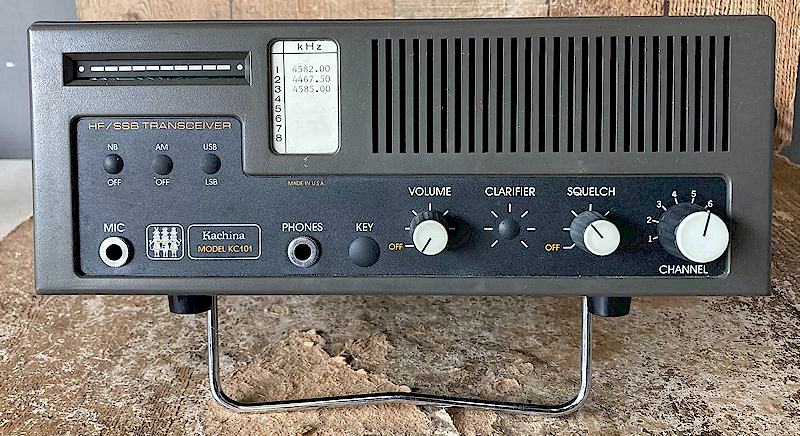
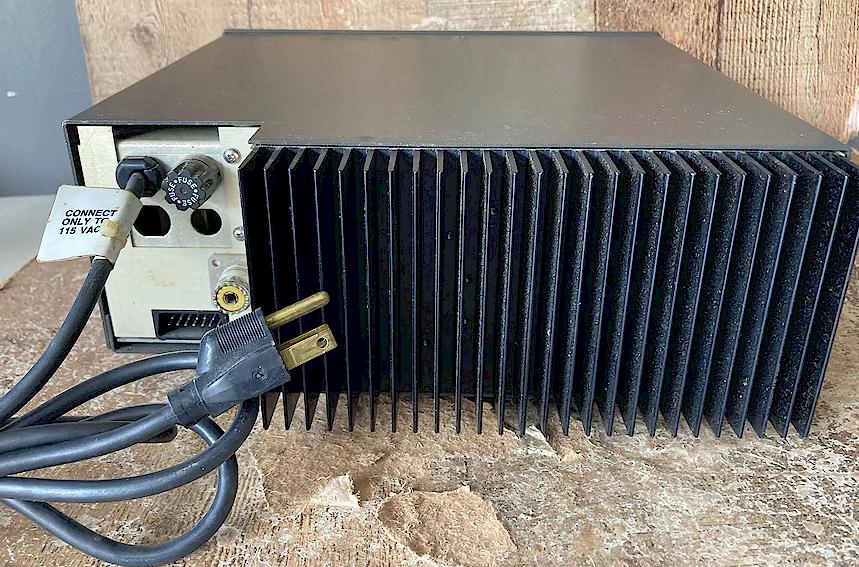
KACHINA KC 102 Photos of the 102 will be added when available.
KACHINA KC 103
The KC 103 is interesting as it has a tunable feature as well as being channelized. This was probably intended as a fixed base radio, considering the complicated nature of the controls compared to previous models. It is unknown whether this model ever saw actual large scale production. This example was on eBay in 2024,
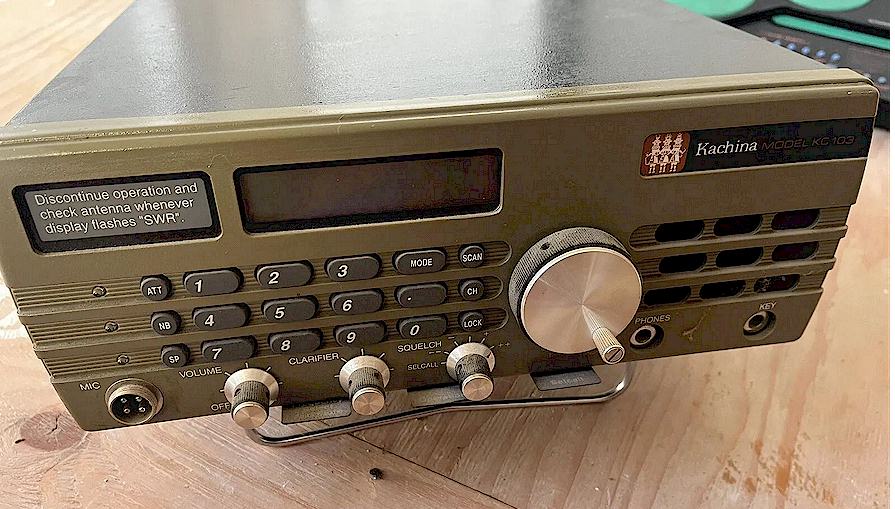
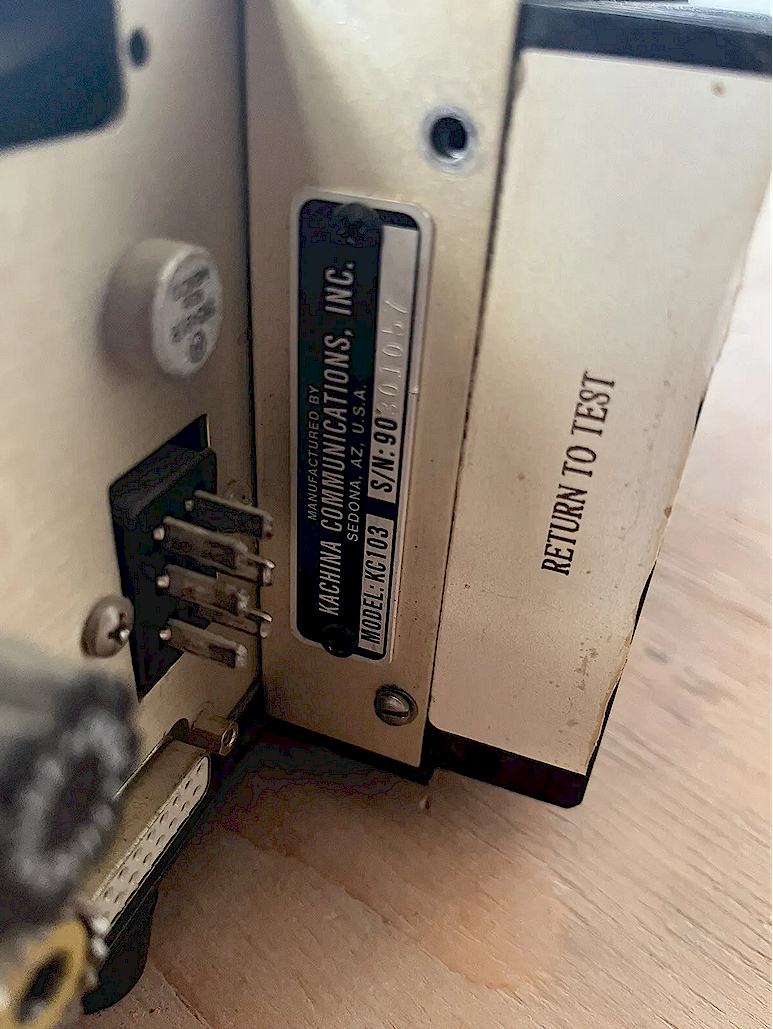
KACHINA KC 104
This is the Kachina KC 104 "Nomad." It is not known whether this model ever reached production quantity but it was seen on eBay in June, 2024 with the seller stating that it had been his father's, who was a technician at Kachina. This is presumed to be near the last KC- series HF SSB radio except that a KC 105 has been seen.. There appears to be a date code on a stud diode of the rear panel of 1996. No other information is known except as with the KC 103 above, these probably did not see large scale production.

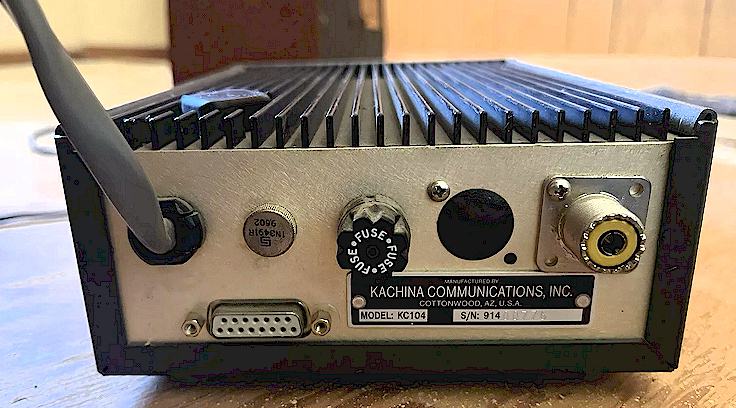
DENTRON SCOUT
Dentron, the linear amplifier and antenna tuner manufacturer of the 1980's, tried their hand at at least one radio, the Scout. This is an HF SSB 5 channel transceiver which I am told uses the basic circuit board from a Mizuho HF SSB radio (not that it's of much help to know that.) It is shown with its companion AC power supply. My gripes about this radio are that it has no clarifier control (RIT) and is USB only. On the other hand, it sounds great on the air with my junkbox 500 Ohm dynamic CB microphone. This one was probably another surplus item from the Civil Air Patrol, as it has their 4 MHz western regional calling frequency in it. This is also shown over on my "Mystery Radios" page, where some additional comments are made. This probably dates from the early 1980's. Common opinion is that this was produced at the end of Dentron's existence and a great many, complete and incomplete, were just stored at the end of the company and filtered out onto the marketplace in mysterious ways, and that no manual was ever printed. Therefore it is pointless asking me for one!
SOUTHCOM INTERNATIONAL SC-100 and SC-102
Southcom International was a southern California firm that made a line of paramilitary HF SSB radios including man pack sets, and also these two base station tabletop transmitter-receivers probably intended for long distance business and government use, such as logging and forestry. Southcom was acquired by Loral and then L3 and eventually disappeared. Southcom was founded by Les Earnshaw, originally of Swan, Atlas and later Kachina Communications.
SC-100
The SC-100 is a simple single channel unit normally sold with USB only. The hole in the panel of this example would be where the clarifier control would have been.


SC-102
The SC-102 was a later product which had the advantage of 4 channels and selectable sidebands. The 102 uses a pair of 8928 tubes in the PA, which appear to be an industrialized version of the 6HF5 television sweep tube. The only other equipment known to use the 8928 is an HF SSB radio made by the Northern Radio Co. of Seattle. I was told that the SC-102 was made for a government contract but was rejected because it used a sweep tube PA section, and the examples produced then went to the Civil Air Patrol. All the examples I have found had CAP crystals in them. Fortunately this is one of the easiest radios to obtain a manual for - - Vintage Manuals sells bound photocopies. Note that only the transmitter requires alignment; the receiver is "plug and play" and one just inserts the correct crystal. Another unique feature is that this is one of the few utility radios with a telegraph key jack. These are often passed by at swap meets as they look like a CB radio base station, but have been somewhat common at California events in the "under $ 25" category.


RCE TR-4B (Canada)
This is the Radio Communications Equipment Co. TR-4B, a Canadian portable AM transmitter-receiver made in Montreal, Canada. The capsules inside the handset are dated 1957. It uses all miniature 1 Volt battery tubes and has room inside for several 45 Volt B batteries and apparently two # 6 cylindrical dry cells. There are still crystals in it for a 5.1 MHz frequency. I have never seen another of these; this was obtained through the kindness of friend Rick, W6NIR, a fellow forestry radio collector.


HUMBLE P-12 (Model B)
This is a Canadian portable forestry radio from the early 1950's made by Humble. Also used by assorted utility users such as logging and trapping. I have a separate web page for this radio, look here:
http://www.wb6nvh.com/Humble/Humble.htm
SPILSBURY SBX-61 Base Station
This is a solid state HF SSB base station made in Canada by Spilsbury and Tindall , probably in the 1980's. It has 12 crystal controlled channels, however each channel requires a set of a surprising number of frequency band range determining plug-in modules, and this example only has a single set. Obtaining additional sets seems impossible other than by fabricating them. This transmitter-receiver is USB or AM only. It is relatively lightweight and runs from 117V AC.






MYSTERY HF PORTABLE - Recognize it?
This set has no maker's name on it that I have been able to find. That leaves out Morrow and Radio Specialty which always engraved their name on equipment somewhere. If you recognize this radio, please tell me! The marking of the parts suggests this was made in the USA in the mid or late 1950's. It has an interesting self contained telescopic antenna rod that doubles as a handle when replaced, and a loading coil that stows inside the handset area. This is crystal controlled on a single 5 MHz channel. If the receiver were tunable it would be an ideal candidate for 75 Meter use! This was very possibly not a forestry radio at all, it may have been made for some entirely unrelated government agency . It is still tuned on 5422.5 kHz.



FISHER RESEARCH LABORATORY RS-25 / TS-25
This is a high frequency AM receiver-transmitter made during World War II primarily for military police and military fire engine use. All octal tubes. Eventually it was given a standard military type number, late in wartime or early thereafter, of AN/VRC-4. Fisher Research was a Palo Alto company that later would make personal marine radios and metal detectors. They are still in business as far as I know, but have moved out of Palo Alto. Most of these were black but the military example below is gray. The receiver is interesting in that in addition to crystal controlled channels there is one screwdriver-tunable channel as well (tuned from the inside in advance.) There were multiple types of power supplies.

Ver. 6/3/2024 © Geoffrey C. Fors, 2023 All rights reserved